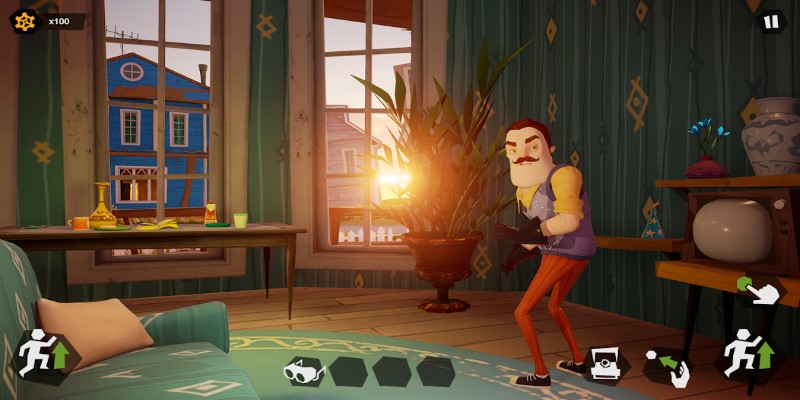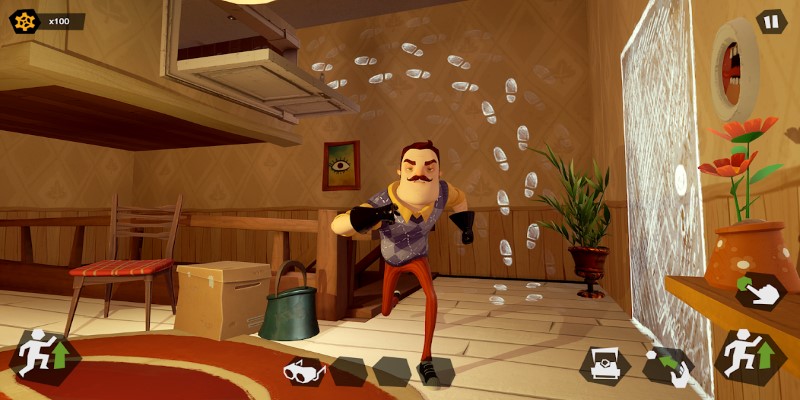
Geometry Dash

Fluvsise - A Fluff to Luv

Snake.io - Fun Snake .io Games

Pokémon Unite

Agent Hunt - Hitman Shooter

Gabbys Dollhouse: Games and Cats

Car Race 3D: Car Racing

Super Meat Boy Forever

Dark War Survival

Stumble Guys

Hello Neighbor Nicky's Diaries
ScreenShots




Editor Reviews
Hello Neighbor: Nicky's Diaries takes the core of the original stealth horror idea and turns the lens inward. This time, you're digging into Nicky's past instead of trying to outwit the creepy Neighbor Neighbor. It leans more toward storytelling, with flashbacks, memories, and short diary-style levels that explore who Nicky is and how the events of Hello Neighbor shaped him.

The gameplay is split between stealth puzzles and narrative moments. You explore different memories, each on a small, self-contained level with its mechanics. Sometimes, it's sneaking around a strange house. Other times, it's more about solving light puzzles and finding out what exactly Nicky remembers—and what he might be forgetting on purpose.
The tone is eerie, not outright scary. You don't get jump scares every few minutes. Instead, the tension arises from not knowing what is real or what the memory is hiding. The diary format gives the whole game a dreamlike, unreliable feel.
It's more experimental than earlier Hello Neighbor titles. Some levels ditch stealth entirely and go full surreal. Others lean into classic mechanics, such as hiding in closets or throwing objects to distract enemies. The variety mostly works, but a few levels feel like filler.

Graphically, it still uses the familiar cartoony, slightly off-kilter art style. Characters have exaggerated features, and objects are oversized, adding to the feeling that something is just a bit off—like a childhood memory that doesn't quite align with reality.
How to Play?
Step 1: Launch the game. You start as Nicky exploring the neighbor's house. Your goal is to uncover the secrets hidden behind locked doors and in hidden rooms. Use a joystick to move and tap to pick up or use objects.
Step 2: Search the environment. Pick up keys, flashlights, and objects that might distract the neighbor or unlock areas. Inventory is limited, so carry only what you need for the moment.
Step 3: The neighbor has patterns but learns from your actions. If you keep entering through the front door, he’ll set traps. Try mixing up your approach using windows, backdoors, and even climbing in from the roof.

Step 4: Crouch and move slowly to avoid detection. If you hear music ramping up, he's close. Hide in closets or under beds until it's safe to come out again.
Step 5: Look for environmental puzzles. Some doors require a key; others can be accessed by turning the power off or using a magnet to retrieve something out of reach. Everything has a logical connection.
Step 6: Take notes if needed. You may have to remember codes, patterns, or locations. The game doesn't always give obvious prompts, so memory helps.

Step 7: Progress saves at checkpoints. If you're caught, you’ll start from the last safe point. Plan each move carefully.
Download for App
Ratings
Disclaimer
2 . Gamekudo provide screenshots, historical version Apk, links and other information, which we collected fromGoogle Play. we will also add our own reviews to providechoose
3 . All trademarks,registered trademarks, product names and company names or logos appearing on the siteare the property of their respective owners.
4 . Gamekudo abides by the federal Digital Millennium copyright Act (DMCA) by responding to notices of alleged infringement that complies with the DMcA and other applicable laws.
5 . We guarantee the security of apk files downloaded from our site and also provide the official download linkat Google Play Store and App Store.
6 . lf you are the owner or copyright representative and want to delete your information, please contact [email protected]
7 . All the information on this website is strictly observed all the terms and conditions of Google Ads Advertisingpolicies and Google Unwanted Software policy.





















